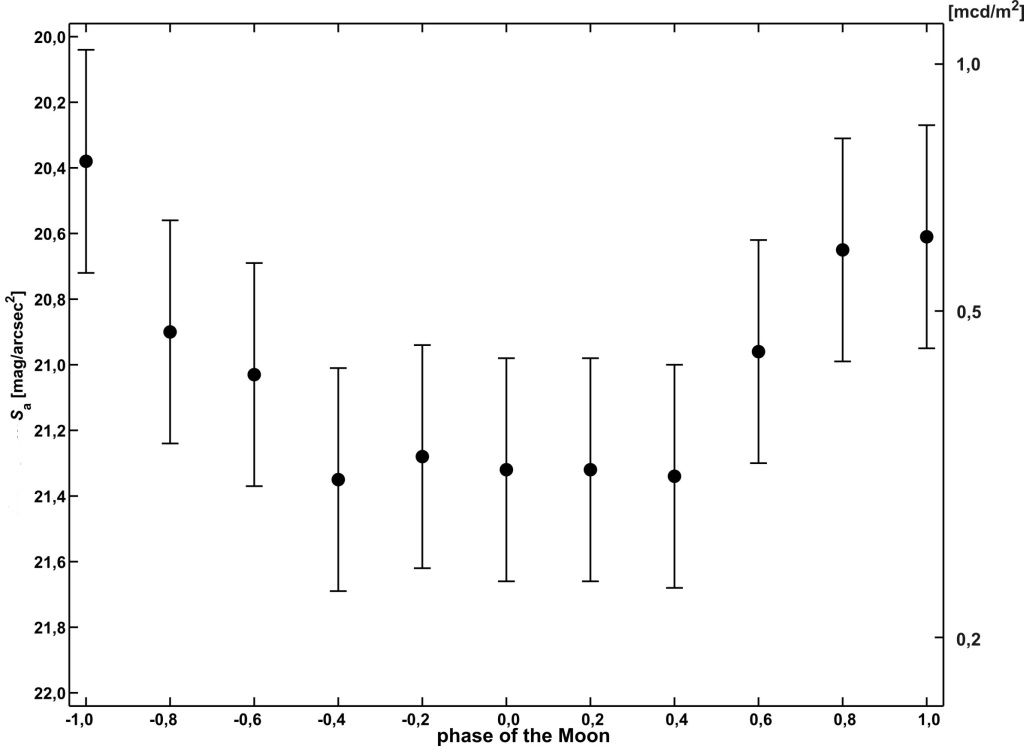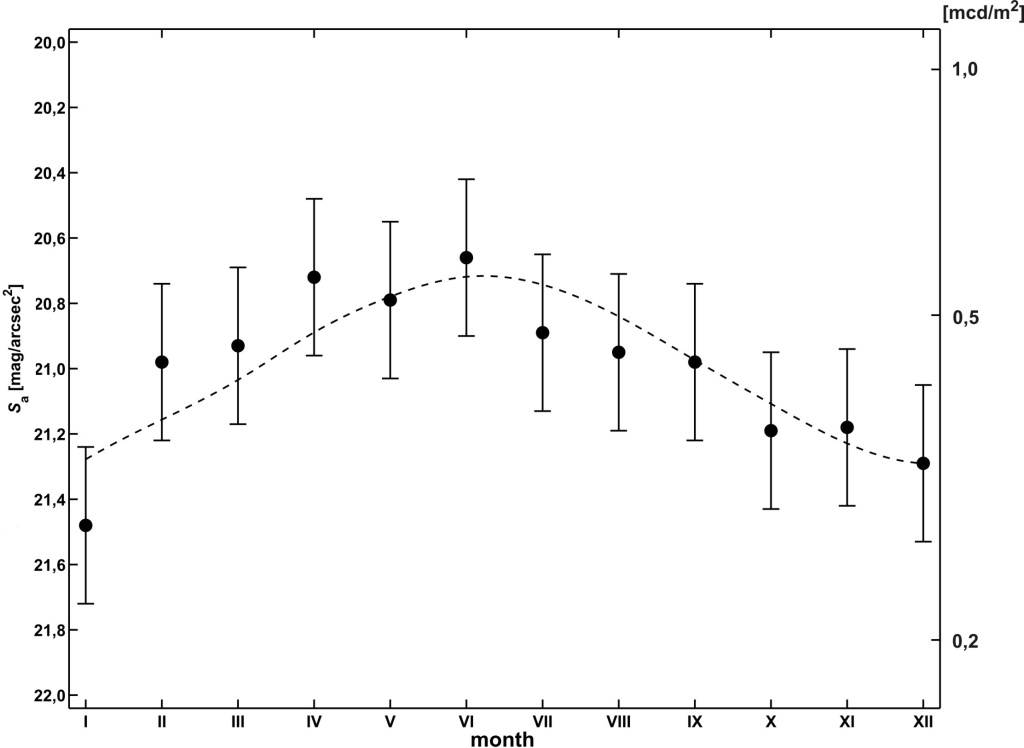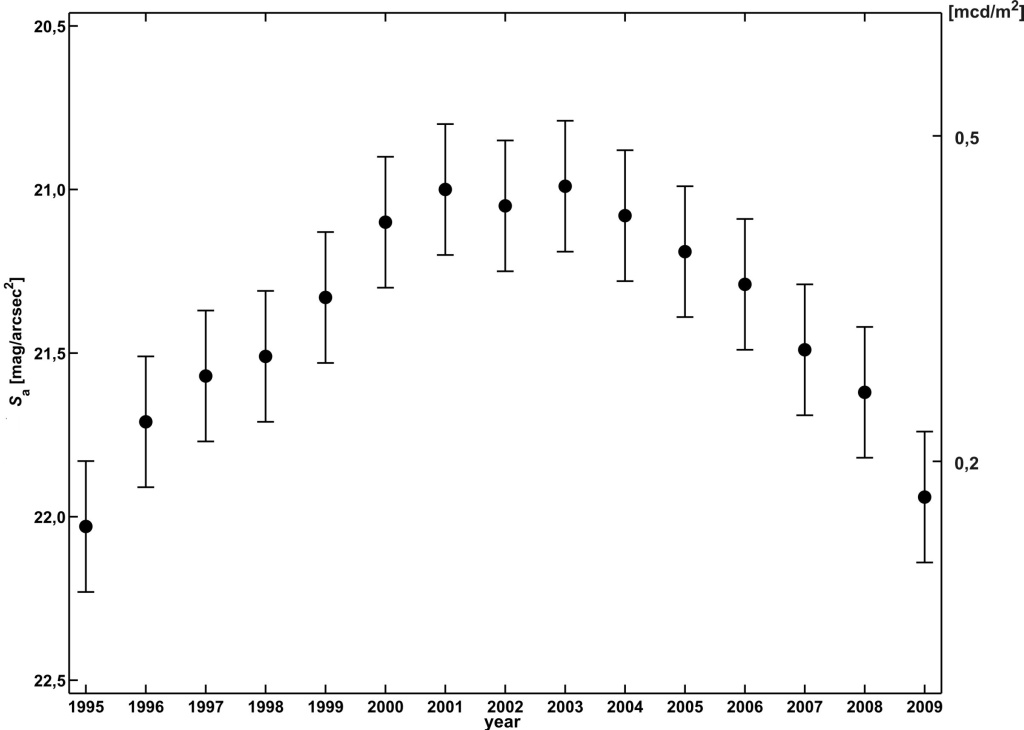Verification of the cometary method
In order to determine whether the value of Sa, obtained by the cometary method actually reflects the surface brightness of the night sky, was checked if any periodic changes in the brightness of the night sky can be associated with the natural phenomena. Were used the observations of comets made in the area of Bialystok (according to the night sky glow atlas [18] it is a part of Poland virtually free of light pollution) in 1994 -2004
Testing the brightness changes of the night sky associated with the change of the Moon phases
Sunlight reflected from the surface of the Moon illuminates the night sky. The degree of lightening is correlated to a phase of the Moon - during the New Moon, this effect does not occur while the at the full-time it is the strongest.

Testing the seasonal changes in the brightness of the night sky associated to the depth of the Sun below the horizon at midnight
The Sun at night is deep below the horizon during the winter, therefore the sky is darkest. In the summer time the sun in the night is on the small depth below the horizon, illuminating the sky to such an extent that even refers to the "astronomical white nights". This effect increases with the observer moving towards the north, therefore, in the north-eastern Poland, where this observations have been done, it is clearly visible.

Testing the night sky brightness changes associated to the solar activity
In view of the solar activity eleven years cycle the surface brightness of the sky varies in the range from 22 mag/arcsec2 in a minimum of activity (1994-1998 and since 2005) to 21 mag/arcsec2 in the maximum period (1999-2003). Was determinated an average annual value of S a beginning from 1995, taking into account only observations made in the best conditions in Poland by the most experienced observers.



